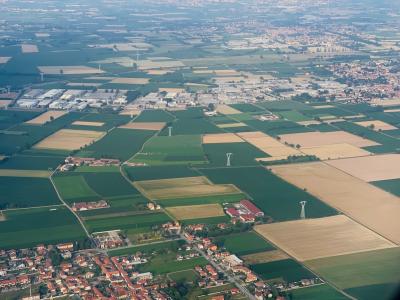How Cities Influence Rural Land Use Change in the U.S.
Cities are hubs of resource consumption and their impacts on land use extend beyond their immediate surroundings, affecting neighboring and far-away regions through commodity supply chains. These long-distance influences, known as teleconnections, are crucial for understanding the drivers of land use change. This paper presents a methodology for quantifying and mapping teleconnections between cities and between urban and rural areas in the United States, using graphical networks and information theory to deduce causal relationships. Despite their complexity, teleconnections in the US reveal predictable patterns that signal mounting land stress on rural areas due to the expansion of cities.
Globalization has led to virtually all cities being interconnected through teleconnections. While individual cities typically have relatively small networks with nearby rural areas, their indirect effects on other rural areas through interactions with other cities can be significant. In the US, large agricultural producing areas serve multiple cities, and these regions are increasingly characterized by a higher intensity of agricultural production and a reduction in available agricultural land. This indicates that cities are placing growing pressure on major commodity-producing areas. This study shows that predictive models that can estimate teleconnections perform well, offering the potential for incorporating teleconnections into future land-use modeling efforts.
Urban land teleconnections are critical in understanding land use and land cover change (LULCC), yet they are rarely incorporated into LULCC models. This approach uses information theory in concert with graphical networks to map urban land teleconnections in the US. Long-term (1950-2016) datasets on land cover changes in urban and rural areas are used to understand interdependent relationships between different areas. Graphical networks are used to map the physical linkages, and information theory is used to infer causation, that is, a dependent relationship between a change in one area (e.g., city) and changes in dependent areas (e.g., rural lands). Teleconnections in the US are very complex, with cities influencing each other as well as directly and indirectly influencing many rural lands, both proximate (near) and distal (far) from the urbanizing areas. The results suggest that changes in urban population density are more important determinants of the effects of cities on proximate and distal rural lands than urban land cover change. In addition, rural land characteristics appear to be more important than urban dynamics in determining teleconnections. The methodological approach holds promise for incorporating teleconnections in future LULCC modeling efforts and provides important considerations for emissions modeling, economic supply chains, and future land-use planning.

